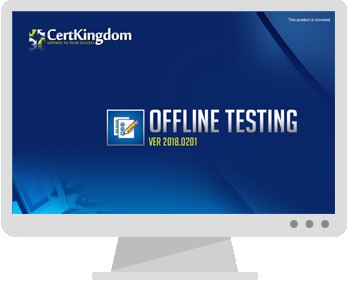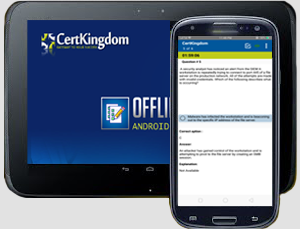Exam: 2V0-11.25

|
|||||||||||||||||||||||||||
2V0-11.25 VMware Cloud Foundation 5.2 Administrator Exam
The 2V0-11.25 exam, the VMware Cloud Foundation Administrator exam, covers
various aspects of VMware Cloud Foundation administration, including IT
Architectures, VMware by Broadcom Solution, and troubleshooting & optimization.
It is a 135-minute exam with 70 multiple-choice, multiple-selection, matching,
and sequencing questions, requiring a passing score of 300 (scaled).
Exam Details:
Exam Code: 2V0-11.25
Certification: VMware Certified Professional - VMware Cloud Foundation
Administrator
Duration: 135 minutes
Questions: 70
Format: Multiple-choice, Multiple Selection, Matching, Sequencing
Passing Score: 300 (scaled score of 100-500)
Delivery: Online proctored or in-person at a Pearson VUE testing center
Key Topics:
IT Architectures, Technologies, and Standards: Understanding the underlying
infrastructure and standards used in VMware Cloud Foundation
VMware by Broadcom Solution: Familiarity with the VMware by Broadcom solution
and its components
Plan and Design: Knowledge of planning and designing the VMware by Broadcom
solution for specific needs
Install, Configure, and Administrate: Practical experience in installing,
configuring, and managing the solution
Troubleshoot and Optimize: Ability to diagnose and resolve issues and optimize
performance
Target Audience:
Individuals with at least 6 months of experience with VMware Cloud
Foundation and 1-2 years in IT
Experience with VMware Cloud Foundation components like vSphere, vSAN, NSX, Aria
Automation, and others
Core Exam Keywords & Topics
1. vRealize / Aria Operations Basics
vRealize Operations (vROps)
VMware Aria Operations
Architecture and components
Node types (Master, Replica, Data nodes)
2. Installation and Configuration
vROps deployment types
Sizing and scalability
Certificates and authentication
Policy configuration
Solution adapters (e.g., vCenter, AWS, Azure)
3. Monitoring and Troubleshooting
Alerts and Symptoms
Health, Risk, Efficiency badges
Dashboards and Views
Super Metrics
Troubleshooting Workbench
4. Capacity and Performance Management
Capacity planning
Rightsizing VMs
Workload balancing
Forecasting and demand management
5. Policies and Customization
Creating and modifying policies
Custom dashboards
Views and reports
Automation and remediation actions
6. Management Packs and Integrations
Installing and configuring management packs
Cloud integrations (e.g., AWS, Azure, GCP)
Integration with vRealize Log Insight
7. Security and Compliance
Access control
Role-based access (RBAC)
Secure data handling
8. Troubleshooting and Optimization
Troubleshooting clusters and nodes
Performance optimization
Analyzing logs and events
2V0-11.25 Brain Dumps Exam + Online / Offline and Android Testing Engine & 4500+ other exams included
$50 - $25 (you save $25)
Buy Now
QUESTION 1
DRAG DROP
An administrator has been tasked with importing a new certificate for vRealize
Operations using
vRealize Lifecycle Manager.
Drag and drop the four correct actions the administrator must complete from the
action list on the
left and place the actions into the correct sequence on the right. (Choose
four.)
Answer:
Explanation:
To import a new certificate for vRealize Operations using vRealize Lifecycle
Manager (vRSLCM), the
correct sequence of actions is as follows:
Login as admin@local
In the My Services page, click Locker
In the Navigation pane, click Certificates
On the Certificates page, click Import
Login as admin@local:
The administrator must log in with administrative credentials to access vRSLCM's
services and settings.
In the My Services page, click Locker:
The "Locker" service in vRSLCM is used to manage certificates, credentials, and
licenses.
In the Navigation pane, click Certificates:
Once in the Locker service, navigate to the Certificates section to manage and
import SSL certificates.
On the Certificates page, click Import:
The final step is to click "Import" to upload the new certificate into vRSLCM.
Incorrect Steps:
Login as root@local: Root login is typically not required for vRSLCM operations.
In the Security page, click Locker: Locker is accessed through the My Services
page, not the Security page.
By following this sequence, the certificate import process will be completed
successfully.
QUESTION 2
Which three deployment architectures are valid for vRealize Log Insight
listed below? (Choose three.)
A. Ten node deployment with the integrated load balancer
B. Single node deployment with an external load balancer
C. Single node deployment with no load balancer
D. Three node deployment with an external load balancer
E. Single node deployment with the integrated load balancer
F. Two node deployment with the integrated load balancer
Answer: C, D, F
Explanation:
vRealize Log Insight offers flexible deployment architectures to suit various
needs.
Single node deployment with no load balancer : This is suitable for smaller
environments with
limited log volume. A single vRealize Log Insight node handles all log
management tasks.
Three node deployment with an external load balancer : This architecture
provides high availability
and scalability. An external load balancer distributes incoming traffic across
the nodes. This offers
flexibility in load balancer selection and configuration.
Clustered deployment with integrated load balancer : This architecture also
provides high availability
and scalability. In this configuration, a minimum of three vRealize Log Insight
nodes are deployed.
The integrated load balancer distributes incoming log traffic across the nodes,
preventing a single point of failure.
The following architectures are not valid for vRealize Log Insight:
Ten node deployment with the integrated load balancer: The maximum number of
nodes in a cluster
is limited, and ten nodes with an integrated load balancer is not a supported
configuration.
Single node deployment with an external load balancer: A single node deployment
does not require a load balancer.
Single node deployment with the integrated load balancer: The integrated load
balancer is designed
for clustered deployments with a minimum of three nodes.
Two node deployment with the integrated load balancer: The integrated load
balancer requires a
minimum of three nodes for cluster functionality.
QUESTION 3
Forty days ago, an administrator provisioned a Virtual Machine (vm-01) in
preparation for a new
project. The project has now been delayed due to budgetary constraints. As part
of the monthly
service management checks, a second administrator executes the reclaim action on
all idle virtual
machines and vm-01 is listed. The second administrator accidentally reclaims all
idle virtual machines including vm-01.
What action can the administrator complete to prevent this scenario from
happening again?
A. Create a dynamic group with membership based on vSphere tags so that all new
virtual machines are included and then exclude the entire group from reclaim
analysis.
B. Disable Capacity reclamation on the policy applied to new virtual machines.
C. Create a new policy that disables the capacity reclamation on the policy and
apply the policy to the parent object hosting new virtual machines.
D. Increase the default value of the Exclude VM provisioned in the last x days
setting.
Answer: D
Explanation:
Questions no: 3 Verified Answer = D Comprehensive Detailed Explanation with all
VMware Reference
= To prevent the accidental reclamation of recently provisioned VMs, the
administrator should
increase the default value of the "Exclude VM provisioned in the last x days"
setting. This setting
determines the period during which newly provisioned VMs are excluded from
reclamation analysis.
By increasing this value, the administrator can ensure that VMs provisioned for
new projects are not
inadvertently reclaimed .
Here's why the other options are not the best solution:
A . Create a dynamic group with membership based on vSphere tags so that all new
virtual machines
are included and then exclude the entire group from reclaim analysis. While this
approach can be
effective, it requires additional configuration and management of dynamic groups
and vSphere tags.
Increasing the "Exclude VM provisioned in the last x days" setting is a simpler
and more direct solution.
B . Disable Capacity reclamation on the policy applied to new virtual machines.
Disabling capacity
reclamation entirely would prevent vRealize Operations from identifying and
reclaiming any idle
resources on those VMs, which may not be desirable.
C . Create a new policy that disables the capacity reclamation on the policy and
apply the policy to
the parent object hosting new virtual machines. Similar to option B, this would
disable capacity
reclamation for all VMs under the parent object, which may be too broad and
prevent the
reclamation of other idle resources.
QUESTION 4
An administrator needs to deploy a 3-node High Availability duster of
vRealize Operations using
custom CA-signed certificates. An existing vRealize Operations development
environment has
previously been deployed using vRealize Suite Lifecycle Manager
Which method should the Administrator use to complete this objective?
A. Deploy 3 nodes independently, replace certificates and then form the 3-node
duster
B. Deploy a single node duster at the beginning to further expand it to 3 nodes
m the next step.
C. Deploy vRealize Operations analytics duster using Command Line Interface.
D. Deploy vRealize Operations analytics duster using vRealize Suite Lifecycle
Manager.
Answer: D
Explanation:
The administrator should deploy the vRealize Operations analytics cluster using
vRealize Suite
Lifecycle Manager (vRSLCM) . vRSLCM simplifies the deployment and management of
vRealize Suite
products, including vRealize Operations. It allows the administrator to deploy a
3-node High
Availability cluster with custom CA-signed certificates in a streamlined manner.
Here's why the other options are not suitable:
A . Deploy 3 nodes independently, replace certificates and then form the 3-node
cluster: This
approach is more complex and prone to errors. It involves manual configuration
and certificate
replacement on each node.
B . Deploy a single node cluster at the beginning to further expand it to 3
nodes in the next step:
While possible, this method is not as efficient as deploying a 3-node cluster
directly using vRSLCM.
C . Deploy vRealize Operations analytics cluster using Command Line Interface:
Deploying using the
CLI requires more expertise and manual intervention compared to using vRSLCM.
vRSLCM provides a centralized platform for managing the entire lifecycle of
vRealize Suite products,
including deployment, configuration, and upgrades. It simplifies the process of
deploying a 3-node
High Availability cluster of vRealize Operations with custom CA-signed
certificates, ensuring a secure
and efficient deployment.
QUESTION 5
In vRealize Operations, a user applies a CPU License to a custom group which has
existing hosts.
How will the Virtual Machines (VMs) on the existing hosts be affected?
A. The CPU license gets converted to a CPU and VM license.
B. The VMs running on the hosts show a 'License is Invalid* watermark.
C. The VMs running on the hosts are not affected.
D. vRealize Operations prompts the user to apply a VM license key to the VMs
running.
Answer: B
Explanation:
When a CPU license is applied to a custom group containing existing hosts in
vRealize Operations, the
VMs running on those hosts will show a "License is Invalid" watermark . This is
because CPU licenses
in vRealize Operations are specifically designed for licensing hosts and their
CPU capacity. To license
the VMs running on those hosts, you need to apply a separate VM license key.
Here's why the other options are incorrect:
A . The CPU license gets converted to a CPU and VM license: vRealize Operations
does not
automatically convert CPU licenses to VM licenses.
C . The VMs running on the hosts are not affected: This is incorrect, as the VMs
will be affected by the
lack of a valid VM license.
D . vRealize Operations prompts the user to apply a VM license key to the VMs
running: While
vRealize Operations may indicate that the VMs are not properly licensed, it does
not explicitly
prompt the user to apply a VM license key.
QUESTION 6
When using vRealize Lifecycle Manager to capture content from a vRealize
Operations endpoint,
which three statements are correct regarding the content sync? (Choose three.)
A. An auto refresh of content list runs in the background every 15 minutes.
B. The UI retrieves the content every time from the endpoint when opening the
endpoint.
C. An auto refresh of content list runs in the background every 30 minutes.
D. The UI retrieves the content from the endpoint when listing the content for
the first time.
E. Select the "Get latest" content option to retrieve the content in between
automatic sync timers.
F. Select the "Get latest" content option to retrieve the content, before the
initial sync.
Answer: A, D, E
Explanation:
When capturing content from a vRealize Operations endpoint in vRealize Lifecycle
Manager, the
following statements are correct regarding content sync:
A . An auto refresh of content list runs in the background every 15 minutes :
vRealize Lifecycle
Manager automatically refreshes the content list in the background every 15
minutes to ensure that
the displayed content is up-to-date.
Buy Complete
Certainly, here's a rewritten version of your text:
Packiam Vijendran 1 months ago - Malaysia
Passed the exam yesterday, 95% of the question were from this site. Note: Pay
more attention to all the community discussions on each question, instead of the
answers provided by the examtopics and I strongly suggest to get the contributor
access.
upvoted 4 times
Javier Cardaba Enjuto 2 months, 1 week ago - Spain
Excellent pre-exam session tool
upvoted 2 times
Palanisamy Arulmohan 1 months, 1 week ago - USA
I passed today, 94 questions asked and 99% of them were in this dump.
3 labs: BGP (as-override), HSRP, OSPF (without network statement)
upvoted 4 times
peppinauz 3 months, 2 weeks ago
I pass my exam, dump is valid about 90-95%. review the community answers!!
upvoted 6 times
Oberoi Ankit3 months, 3 weeks ago - USA Texas
Passed exam today dump still accurate. almost all the questions are here, some
are overcomplicated or incomplete on the site,
upvoted 4 times
logged members Can Post comments / review and take part in Discussion
Certkingdom Offline Testing Engine Simulator Download
Prepare with yourself how CertKingdom Offline Exam Simulator it is designed specifically for any exam preparation. It allows you to create, edit, and take practice tests in an environment very similar to an actual exam.
Supported Platforms: Windows-7 64bit or later - EULA | How to Install?
FAQ's: Windows-8 / Windows 10 if you face any issue kinldy uninstall and reinstall the Simulator again.
Download Offline Simulator-Beta
Certkingdom Testing Engine Features
- Certkingdom Testing Engine simulates the real exam environment.
- Interactive Testing Engine Included
- Live Web App Testing Engine
- Offline Downloadable Desktop App Testing Engine
- Testing Engine App for Android
- Testing Engine App for iPhone
- Testing Engine App for iPad
- Working with the Certkingdom Testing Engine is just like taking the real tests, except we also give you the correct answers.
- More importantly, we also give you detailed explanations to ensure you fully understand how and why the answers are correct.
Certkingdom Android Testing Engine Simulator Download
Take your learning mobile android device with all the features as desktop offline testing engine. All android devices are supported.
Supported Platforms: All Android OS EULA
Install the Android Testing Engine from google play store and download the app.ck from certkingdom website android testing engine download

Certkingdom Android Testing Engine Features
- CertKingdom Offline Android Testing Engine
- Make sure to enable Root check in Playstore
- Live Realistic practice tests
- Live Virtual test environment
- Live Practice test environment
- Mark unanswered Q&A
- Free Updates
- Save your tests results
- Re-examine the unanswered Q & A
- Make your own test scenario (settings)
- Just like the real tests: multiple choice questions
- Updated regularly, always current




